Metabolic regulation of telomere silencing by SESAME complex-catalyzed H3T11 phosphorylation
- PMID: 33500413
- PMCID: PMC7838282
- DOI: 10.1038/s41467-020-20711-1
Metabolic regulation of telomere silencing by SESAME complex-catalyzed H3T11 phosphorylation
Abstract
Telomeres are organized into a heterochromatin structure and maintenance of silent heterochromatin is required for chromosome stability. How telomere heterochromatin is dynamically regulated in response to stimuli remains unknown. Pyruvate kinase Pyk1 forms a complex named SESAME (Serine-responsive SAM-containing Metabolic Enzyme complex) to regulate gene expression by phosphorylating histone H3T11 (H3pT11). Here, we identify a function of SESAME in regulating telomere heterochromatin structure. SESAME phosphorylates H3T11 at telomeres, which maintains SIR (silent information regulator) complex occupancy at telomeres and protects Sir2 from degradation by autophagy. Moreover, SESAME-catalyzed H3pT11 directly represses autophagy-related gene expression to further prevent autophagy-mediated Sir2 degradation. By promoting H3pT11, serine increases Sir2 protein levels and enhances telomere silencing. Loss of H3pT11 leads to reduced Sir2 and compromised telomere silencing during chronological aging. Together, our study provides insights into dynamic regulation of silent heterochromatin by histone modifications and autophagy in response to cell metabolism and aging.
Conflict of interest statement
The authors declare no competing interests.
Figures


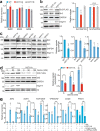
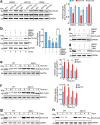
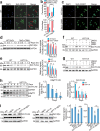
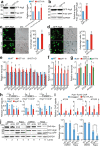
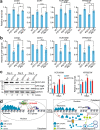
Similar articles
-
SESAME-catalyzed H3T11 phosphorylation inhibits Dot1-catalyzed H3K79me3 to regulate autophagy and telomere silencing.Nat Commun. 2022 Dec 6;13(1):7526. doi: 10.1038/s41467-022-35182-9. Nat Commun. 2022. PMID: 36473858 Free PMC article.
-
Regulation of telomere silencing by the core histones-autophagy-Sir2 axis.Life Sci Alliance. 2022 Dec 30;6(3):e202201614. doi: 10.26508/lsa.202201614. Print 2023 Mar. Life Sci Alliance. 2022. PMID: 36585257 Free PMC article.
-
Recruitment and allosteric stimulation of a histone-deubiquitinating enzyme during heterochromatin assembly.J Biol Chem. 2018 Feb 16;293(7):2498-2509. doi: 10.1074/jbc.RA117.000498. Epub 2017 Dec 29. J Biol Chem. 2018. PMID: 29288197 Free PMC article.
-
A model for step-wise assembly of heterochromatin in yeast.Novartis Found Symp. 2004;259:48-56; discussion 56-62, 163-9. Novartis Found Symp. 2004. PMID: 15171246 Review.
-
Molecular model for telomeric heterochromatin in yeast.Curr Opin Cell Biol. 1997 Jun;9(3):383-7. doi: 10.1016/s0955-0674(97)80011-7. Curr Opin Cell Biol. 1997. PMID: 9159071 Review.
Cited by
-
Interplay Between Glucose Metabolism and Chromatin Modifications in Cancer.Front Cell Dev Biol. 2021 Apr 27;9:654337. doi: 10.3389/fcell.2021.654337. eCollection 2021. Front Cell Dev Biol. 2021. PMID: 33987181 Free PMC article.
-
Roles of extracellular vesicles in the aging microenvironment and age-related diseases.J Extracell Vesicles. 2021 Oct;10(12):e12154. doi: 10.1002/jev2.12154. J Extracell Vesicles. 2021. PMID: 34609061 Free PMC article. Review.
-
H3T11 phosphorylation by CKII is required for heterochromatin formation in Neurospora.Nucleic Acids Res. 2024 Sep 9;52(16):9536-9550. doi: 10.1093/nar/gkae664. Nucleic Acids Res. 2024. PMID: 39106166 Free PMC article.
-
Cla4 phosphorylates histone methyltransferase Set1 to prevent its degradation by the APC/CCdh1 complex.Sci Adv. 2023 Sep 29;9(39):eadi7238. doi: 10.1126/sciadv.adi7238. Epub 2023 Sep 29. Sci Adv. 2023. PMID: 37774018 Free PMC article.
-
Muscle-specific pyruvate kinase isoforms, PKM1 and PKM2, regulate mammalian SWI/SNF proteins and histone 3 phosphorylation during myoblast differentiation.FASEB J. 2024 Jun 15;38(11):e23702. doi: 10.1096/fj.202400784R. FASEB J. 2024. PMID: 38837439 Free PMC article.
References
Publication types
MeSH terms
Substances
Grants and funding
LinkOut - more resources
Full Text Sources
Other Literature Sources
Molecular Biology Databases

